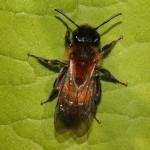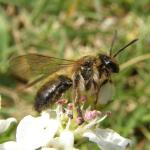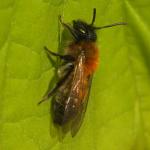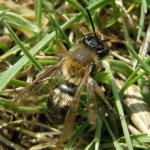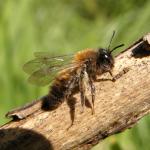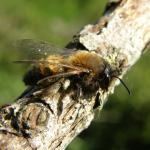Melitta varians Kirby, 1802, Melitta angulosa Kirby, 1802, Andrena mesoxantha Imhoff, 1834, Andrena longula Eversmann, 1852, Andrena mixta Schenck, 1853, Andrena rectangula Schenck, 1853, Andrena varians var conjungens Blüthgen, 1916
A very attractive black and ginger, medium-sized, Andrena which used to be considered common in the mid 1900s, but which has declined greatly in range and occurrence since then. As it has always been associated with early-flowering trees such as blackthorn and hawthorn, it is difficult to understand why this decline has occurred.
Central and southern England, just venturing into Wales. Most modern records come from the south-east.
It is widely distributed in Central Europe.
This species is listed in Falk (1991) as Notable B (now known as Near Threatened).
Has been recorded from a variety of soil types, usually, but not always, in the presence of scrub.
March to June.
Nests in the ground, forming small aggregations or singly.
There are flower-visiting records for a wide range of spring-flowering shrubs as well as herbaceous species such as dandelion.
Nomada panzeri Lepeletier has been recorded as a cleptoparasite. Chambers (1949) thought that
N. fabriciana (Linnaeus) and N. ferruginata (Linnaeus) [as xanthosticta (Kirby)] could also be associated with varians. Stylops nevinsoni Perkins has also been recorded with this species (Perkins, 1918).
2012


